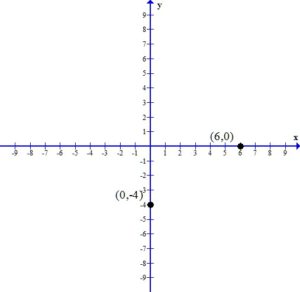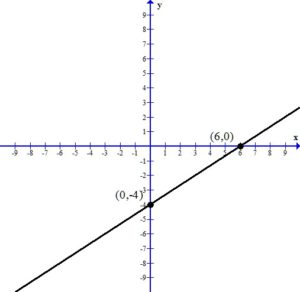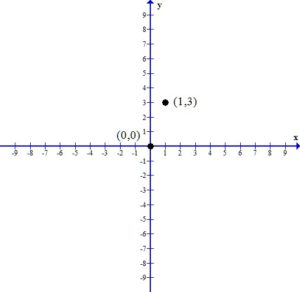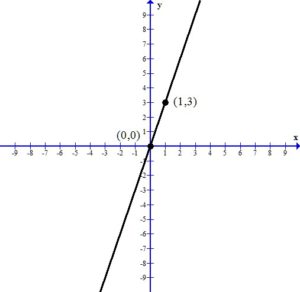Steps for Graphing with the Intercept Method
- Find the x intercept and the y-intercept.
- To find an x-intercept let y=0 and solve for x.
- To find a y-intercept let x=0 and solve for y.
- Plot the x-intercept and y-intercept.
- Draw the line that connects the intercepts.
Example: Graph the linear equation 
Solution:
1. Find the x-intercept and the y-intercept.
To find an x-intercept: Let y=0 and solve for x.






The x-intercept of this equation is 
To find a y-intercept: Let x=0 and solve for y.






The y-intercept of this equation is 
2. Plot the x-intercept and the y-intercept.

3. Draw the line that connects the intercepts.

Example: Graph the linear equation 
Solution:
1. Find the x-intercept and the y-intercept.
To find an x-intercept: Let y=0 and solve for x.




The x-intercept of this equation is 
To find a y-intercept: Let x=0 and solve for y.



The y-intercept of this equation is 
Since the x-intercept and the y-intercept are the same point and we need two distinct points to graph a line, we must find another ordered pair that is a solution to the equation.
Let x=1 and find the associated y value. (I chose x=1 but you could choose a different value)



Another ordered pair on the graph is 
2. Plot the x-intercept and the y-intercept.

3. Draw the line that connects the intercepts.

Example: Graphing a linear equation with intercepts.
Example: Graphing a linear equation with intercepts.
Example: Graphing a linear equation with intercepts.